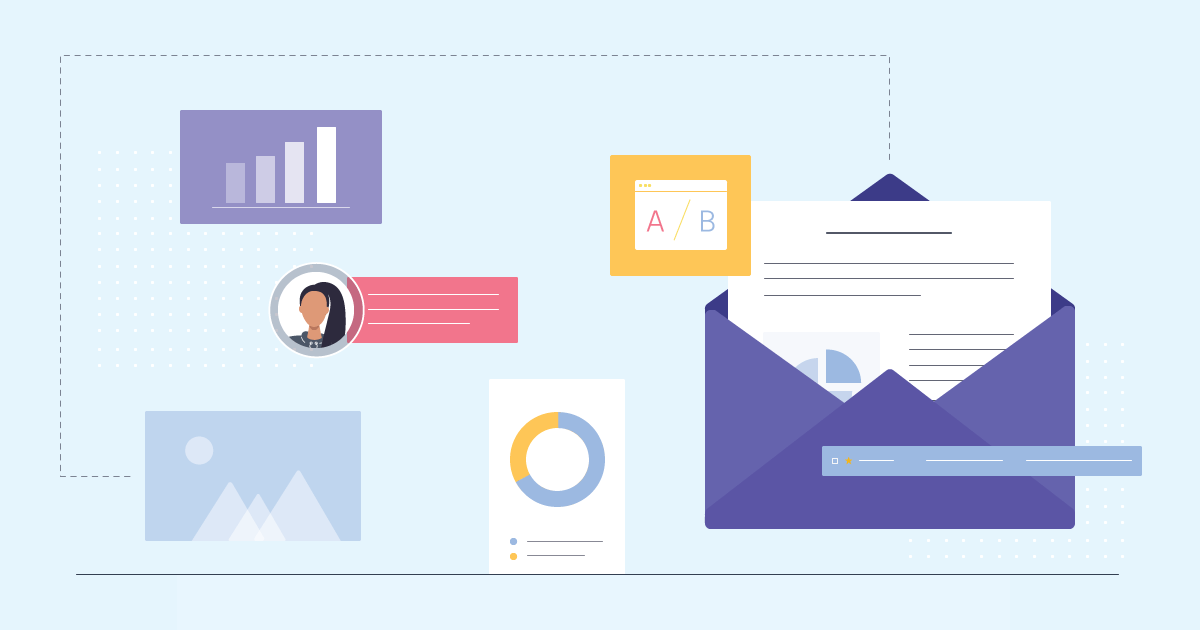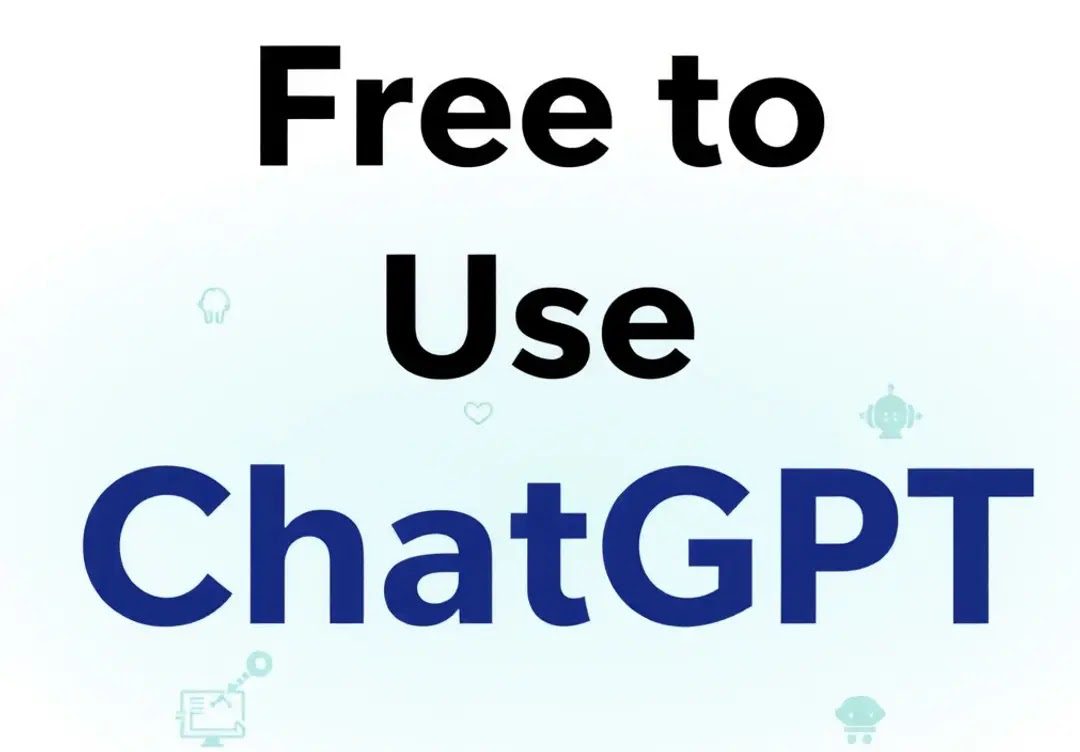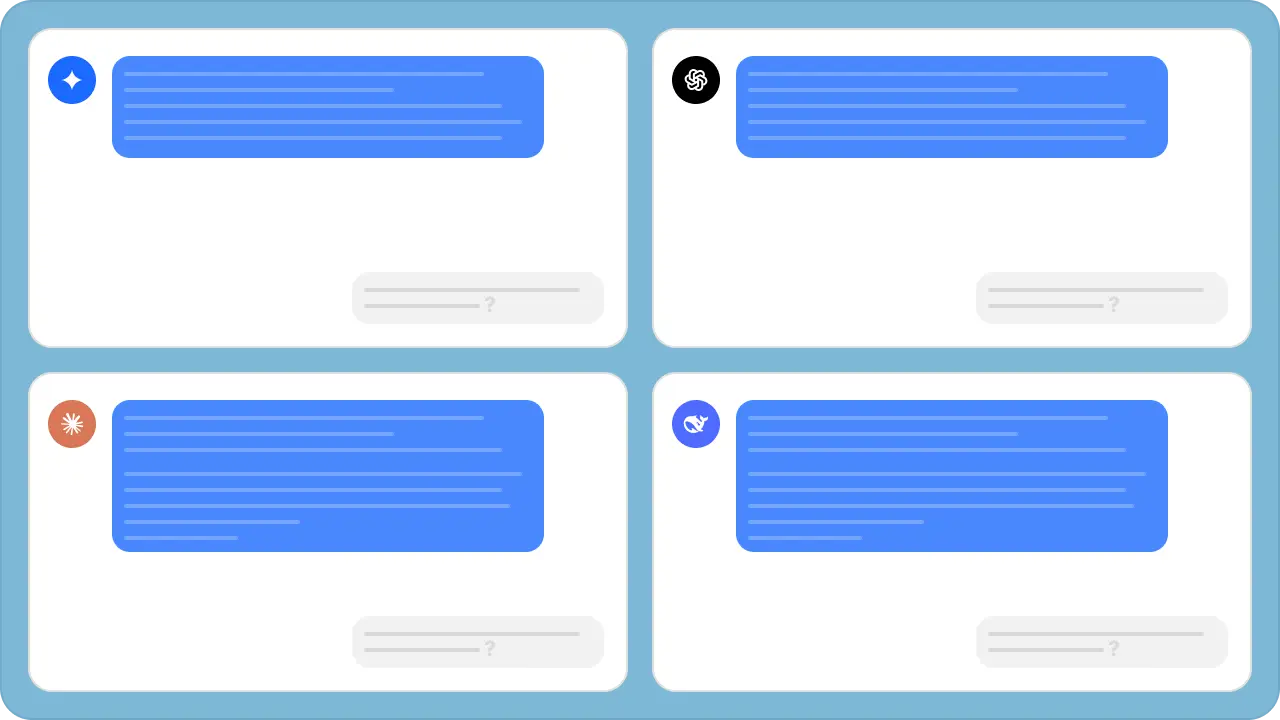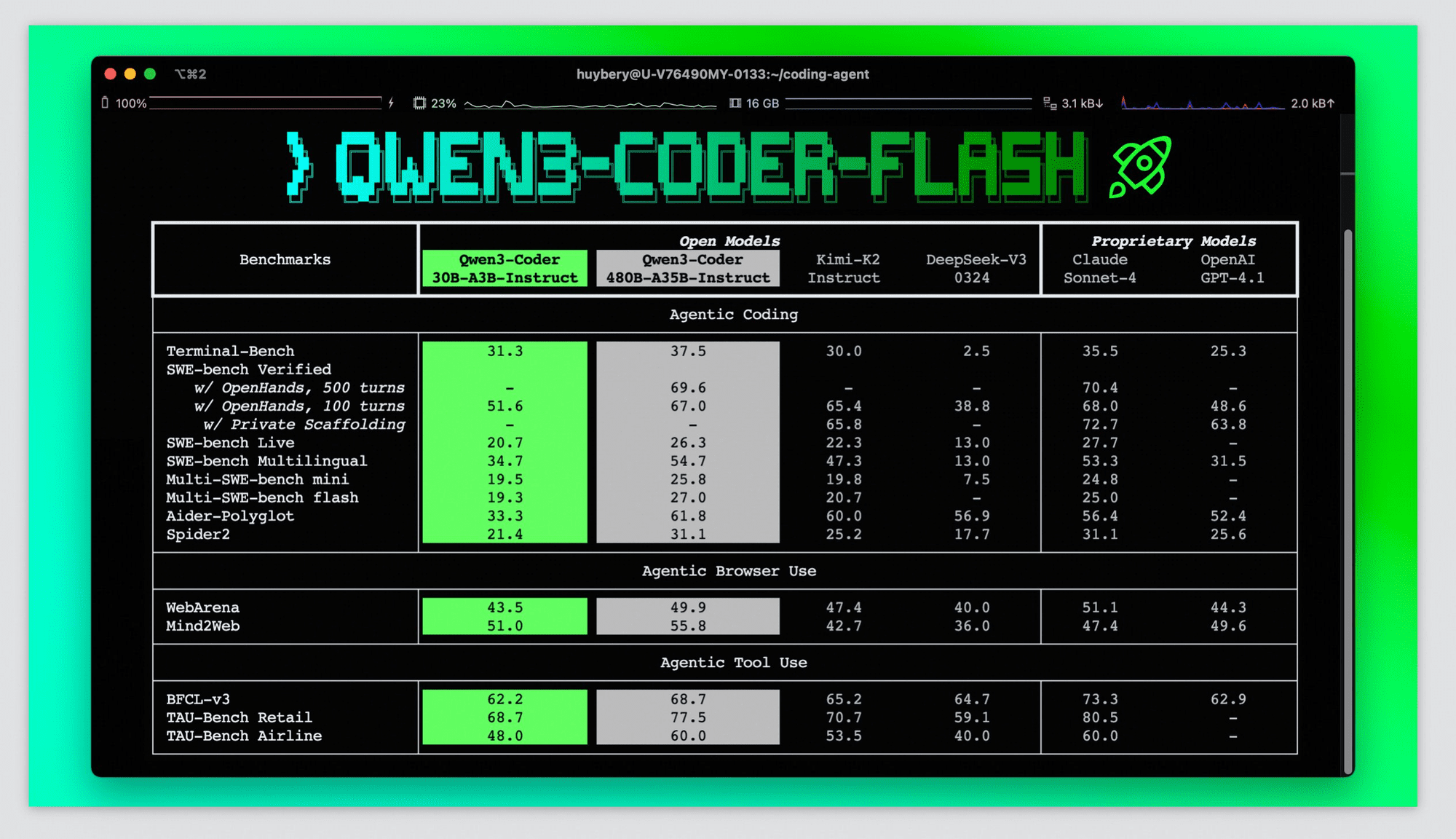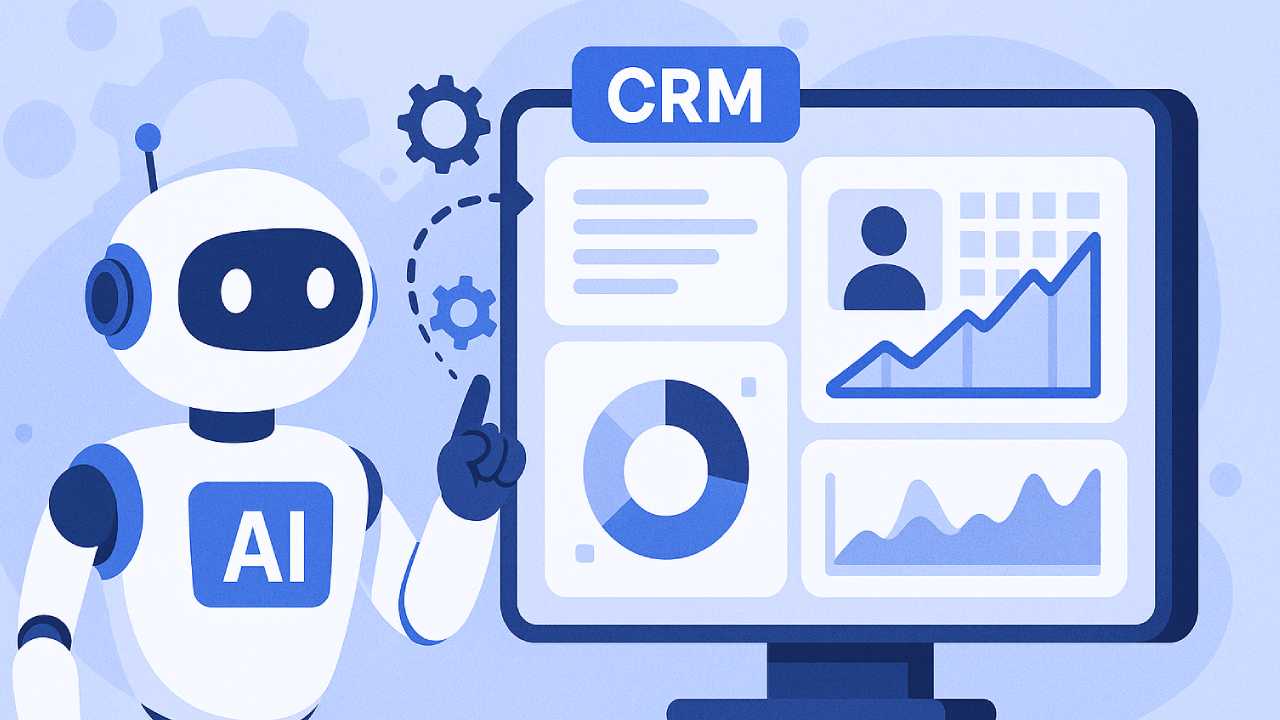Email marketing remains a cornerstone of digital strategy, delivering significant returns and fostering customer engagement. Understanding the current landscape through key statistics is crucial for optimizing campaigns and achieving business goals. Did you know that email marketing consistently generates one of the highest returns on investment, often cited around $36 for every $1 spent? This impressive ROI underscores its value across various niches for lead generation, driving traffic, boosting conversions, and enhancing user engagement. As we move through 2025, staying informed about the latest trends, benchmarks, and user behaviors is essential for anyone leveraging this powerful channel. This compilation provides critical email marketing statistics to guide your strategy and demonstrate the continued relevance and effectiveness of email in the modern marketing mix. Let’s delve into the data that shapes successful email marketing efforts today.
The Reach and Usage of Email in 2025
The foundation of email marketing’s success lies in its vast and growing user base. Understanding the scale and preferred platforms is key.
- Global Email User Base: In 2025, the number of worldwide email users has surpassed 4.48 billion. Projections estimate this figure will climb to 4.73 billion by 2026, indicating sustained growth and relevance (Statista). In the United States alone, 90% of individuals over the age of 15 utilize email.
- Daily Email Volume: The sheer volume of email traffic is staggering. Approximately 347.3 billion emails are sent and received globally each day in 2025. This represents a 4.2% increase from 2022’s daily average of 333.2 billion (Source: Zippia). Forecasts suggest this number will exceed 376 billion daily emails by 2025.
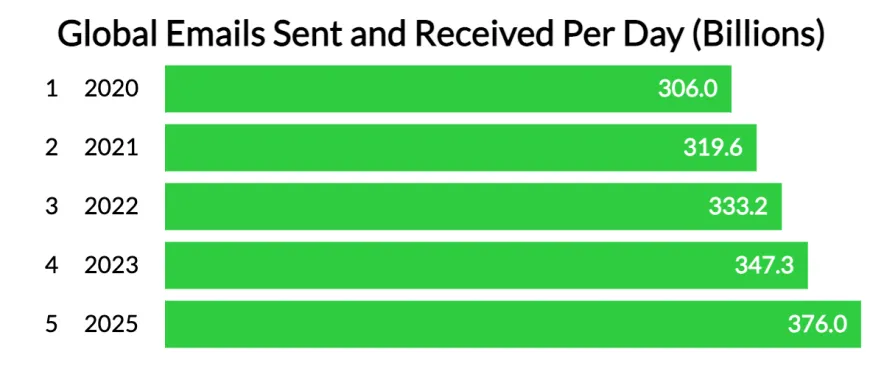 Graph showing the projected growth of global daily emails sent and received from 2022 to 2025, reaching over 376 billion.
Graph showing the projected growth of global daily emails sent and received from 2022 to 2025, reaching over 376 billion.
- Dominant Email Clients: As of 2025, Apple commands the largest email client market share at 58.07%. Gmail follows significantly with 29.67%, while Microsoft’s Outlook holds the third position with a 3.42% market share. This highlights the importance of optimizing emails for Apple devices and Gmail.
Measuring Success: Key Email Marketing ROI Statistics
Return on investment remains a primary indicator of email marketing’s value. Key performance indicators (KPIs) help marketers gauge campaign effectiveness.
- Overall Email Marketing ROI: Email marketing boasts an average ROI of 36:1, meaning for every dollar invested, marketers typically see a $36 return (Litmus).
- Industry-Specific ROI: This return varies by sector:
- Media, publishing, events, sports, & entertainment: $32 ROI per $1 spent
- Software & technology: $36 ROI per $1 spent
- Marketing, PR, & advertising agency: $42 ROI per $1 spent
- Retail, eCommerce, & consumer goods: $45 ROI per $1 spent
- Average Email Open Rate: Across diverse industries, the average email open rate stands at 22.71% (Source: MailChimp). Government-related emails achieve the highest average open rates at 28.77%. The open rate measures the percentage of recipients who open a given email.
- Average Email Conversion Rate: The average conversion rate for email marketing in 2025 is approximately 2.9% (Source: Ruler Analytics). This metric tracks the percentage of subscribers who complete a desired action (like a purchase or signup) after clicking through an email.
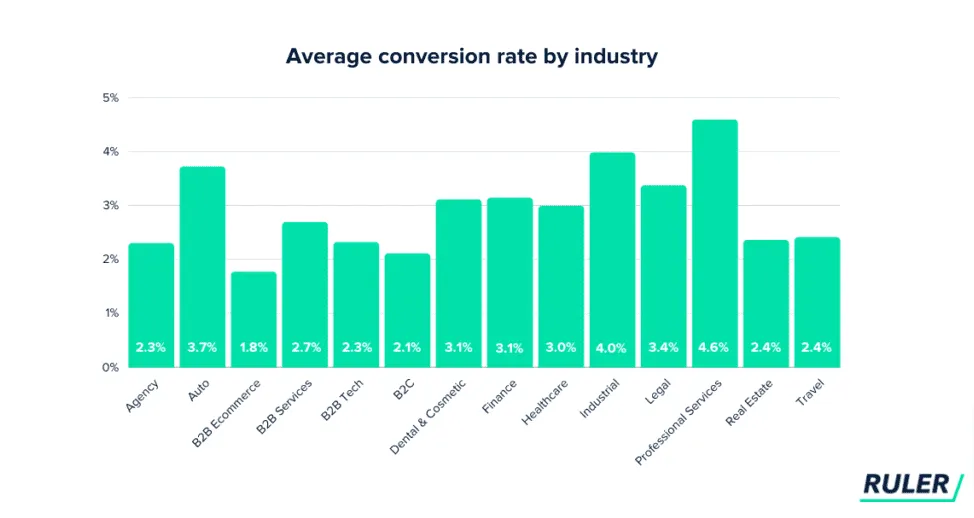 Illustration highlighting the average email marketing conversion rate benchmark, emphasizing performance measurement.
Illustration highlighting the average email marketing conversion rate benchmark, emphasizing performance measurement.
- Cart Abandonment Recovery: Emails specifically targeting cart abandonment show significant success. According to Moosend, 10.37% of cart recovery emails result in conversions, far exceeding the general average email conversion rate. Sending timely reminders, possibly with incentives, can effectively recover potentially lost sales.
- Average Click-Through Rate (CTR): The average email CTR across industries is 2.91%, according to MailChimp. CTR represents the percentage of email recipients who clicked on one or more links within an email.
- Industries with High CTR: Some sectors achieve notably higher CTRs:
- Hobbies: 5.01%
- Media and Publishing: 4.62%
- Government: 3.99%
- Home and Garden: 3.03%
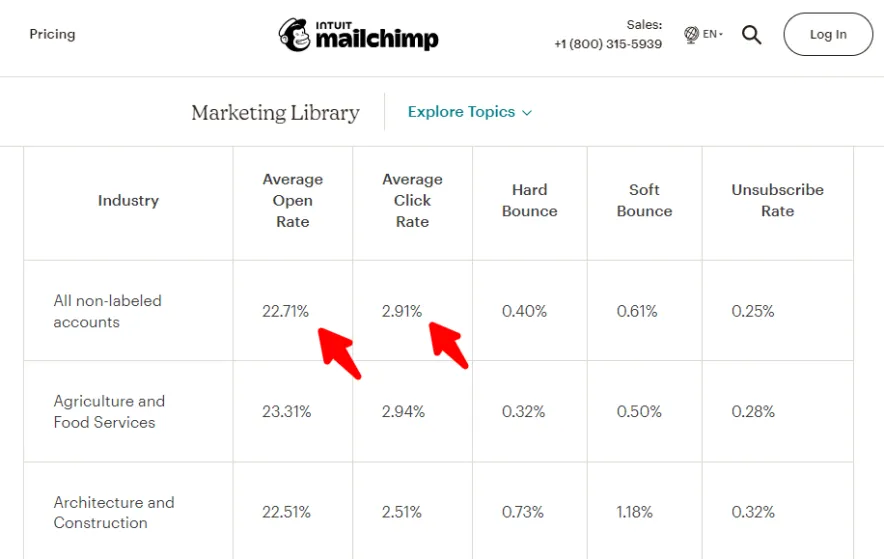 Bar chart displaying average email marketing click-through rates (CTR) across various industries, with Hobbies showing the highest.
Bar chart displaying average email marketing click-through rates (CTR) across various industries, with Hobbies showing the highest.
Email Marketing Performance Benchmarks
Beyond ROI and engagement rates, other metrics provide crucial insights into campaign performance and list health.
- Email Deliverability: The average email deliverability rate across all email service providers is 79.6%. This indicates that roughly one-fifth of emails may not reach the intended inbox, highlighting the importance of list hygiene and sender reputation.
- Optimal Send Times: Data suggests specific times yield better open rates. Emails sent around 4 am show the highest open rate potential (24.31%), followed by 9 am (20.22%) and 11 am (20%). However, optimal times can vary significantly based on audience and industry.
- Mobile Email Consumption: Mobile devices dominate email opens, accounting for 65% of all opens, though this varies regionally (Source: VentureBeat). This necessitates mobile-first email design.
- Average Email Length and Subject Lines: The typical marketing email contains around 435 words, taking about 3 minutes to read. Average subject lines are concise, around 44 characters long. Emojis appear in approximately 7% of subject lines, suggesting cautious but growing adoption.
- Email Bounce Rate: A healthy email bounce rate is generally considered to be between 2% and 3% (Campaign Monitor). Rates exceeding 5% may signal issues with list quality or the email service provider, potentially harming sender reputation. Bounce rate measures the percentage of emails that could not be delivered.
- Unsubscribe Rate: The average unsubscribe rate remains low, typically less than 1% across industries. This rate reflects the percentage of subscribers opting out and can be influenced by email frequency, content relevance, and list quality.
- Preference for Relevant Offers: Consumers respond positively to relevance. According to Liveclicker, 55% of consumers appreciate email messages featuring pertinent products and offers.
Email Strategies for B2B Success
Business-to-business (B2B) marketers heavily rely on email for communication and lead nurturing, employing specific tactics.
- Prevalence in B2B Marketing: A significant 69% of B2B organizations utilize email newsletters as part of their content marketing strategy (Content Marketing Institute). Email consistently ranks as a top owned-media platform for content distribution, second only to the company website.
- Top Technologies Used by B2B Companies: Email marketing software is a core technology for B2B organizations, used by 75%. It ranks third behind analytics tools (83%) and social media publishing/analytics (80%), underlining its importance in the B2B tech stack (Source: Content Marketing Institute).
- Key B2B Email Marketing Metrics: For B2B marketers, the most crucial metrics for measuring email success are click-through rate (91%), open rate (78%), conversion rate (67%), bounce rate (40%), and delivery rate (36%) (Content Marketing Institute).
- The Power of Birthday Emails: Birthday emails significantly outperform standard promotional messages, generating 342% higher revenue per email and achieving 179% higher click rates (Source: Experian). Collecting birth dates allows for highly personalized and effective campaigns.
- Effectiveness of Triggered Emails: Automated, triggered emails (sent based on user actions) achieve substantially higher engagement. An Epsilon study found they average 74.9% higher open rates and 161.9% higher click-through rates compared to traditional bulk emails.
Optimizing Email Campaigns: Effectiveness & Tactics
Marketers continuously refine their tactics to maximize email effectiveness, focusing on timing, content, testing, and integration with other channels.
- Best Days and Times for Sending: Surveys indicate peak engagement times. HubSpot data suggests sending emails between 9 AM – 12 PM and 12 PM – 3 PM (EST) yields good results. Tuesday (favored by 27% of US marketers), Monday (19%), and Thursday (17%) are considered the most effective days.
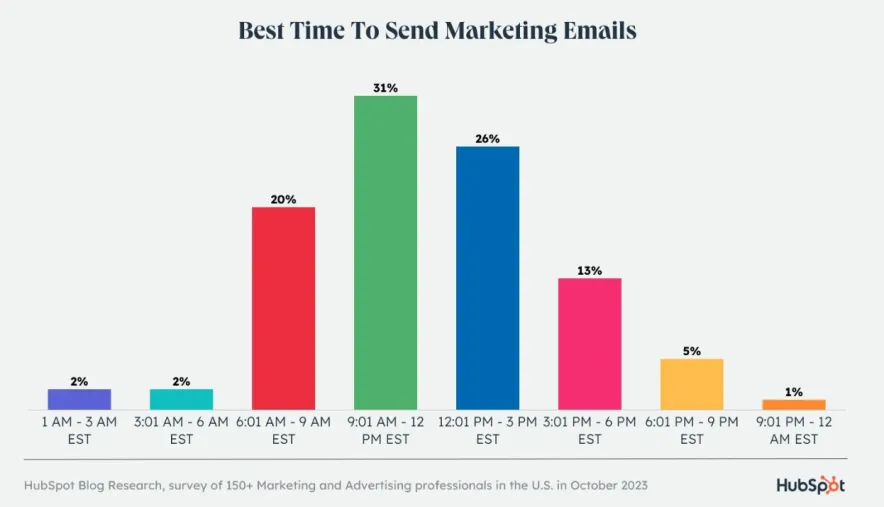 Infographic illustrating the best days and times to send marketing emails for optimal engagement, based on marketer surveys.
Infographic illustrating the best days and times to send marketing emails for optimal engagement, based on marketer surveys.
- Worst Days for Sending: Conversely, weekends generally see lower engagement. Campaign Monitor data points to Saturday and Sunday having the lowest click-through rates (2.1%).
- Investment Trends: Businesses continue to value email marketing. Nearly 37% of companies plan to increase their email marketing investment, while only 1.3% intend to decrease their budget (Litmus report).
- Popular Email Types: Newsletters (used by 81% of marketers) and welcome emails (79%) are the most commonly sent types of marketing emails (Source: Litmus).
- Email Frequency: Sending frequency varies. About 45% of marketers send emails weekly, while approximately one-third send emails multiple times per week (Source: Databox). HubSpot data indicates 21% send daily emails, and 22% send 2-3 times per day.
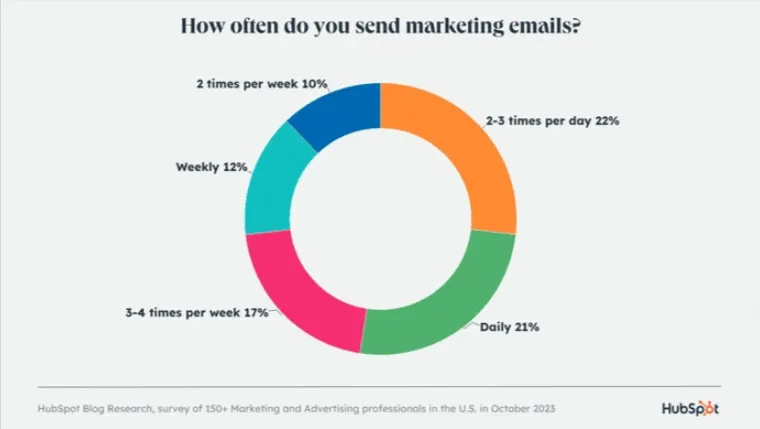 Data visualization showing the distribution of email sending frequency among marketers, from daily to less often.
Data visualization showing the distribution of email sending frequency among marketers, from daily to less often.
- Adjusting Frequency Based on Engagement: Most marketers adapt their strategy based on user interaction. Over 72% reduce email frequency for subscribers who stop opening messages or clicking links, aiming to maintain list health and relevance (Databox survey). Around 28% maintain the same frequency regardless of engagement.
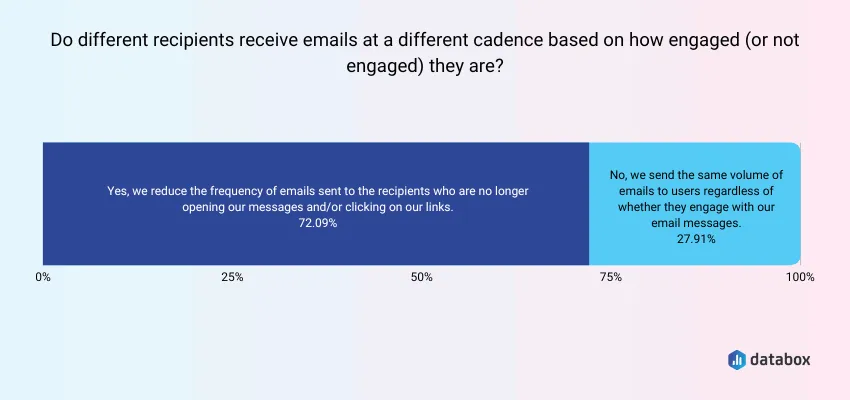 Survey results graphic indicating that most marketers adjust email frequency based on recipient engagement levels.
Survey results graphic indicating that most marketers adjust email frequency based on recipient engagement levels.
- A/B Testing Practices: Split testing is a common optimization technique. GetResponse found that 20% of marketers test offers, layouts, and copy. Another 16% focus solely on testing subject lines, while 10% test performance by segment.
- Driving Landing Page Traffic: Email is a primary driver of traffic to landing pages for many businesses (21%), surpassing organic social media (16%) and organic search (14%) (GetResponse). However, generating sufficient traffic remains a challenge for 45% of marketers. Other challenges include poor conversion rates (33%), A/B testing difficulties (18%), and crafting effective copy/CTAs (16%).
- Video in Email: Incorporating video content can significantly boost engagement. Martech Advisor reports that adding videos to emails can increase click rates by as much as 300%.
The Power of Personalization and Automation
Tailoring email content and automating workflows are critical strategies for enhancing relevance and efficiency.
- Impact of Email Segmentation: Segmenting email lists for targeted campaigns drives significant revenue. The DMA reports that segmented emails generate 58% of all email revenue. Furthermore, 36% of revenues come from emails sent to specific target selections, emphasizing the value of precise audience targeting.
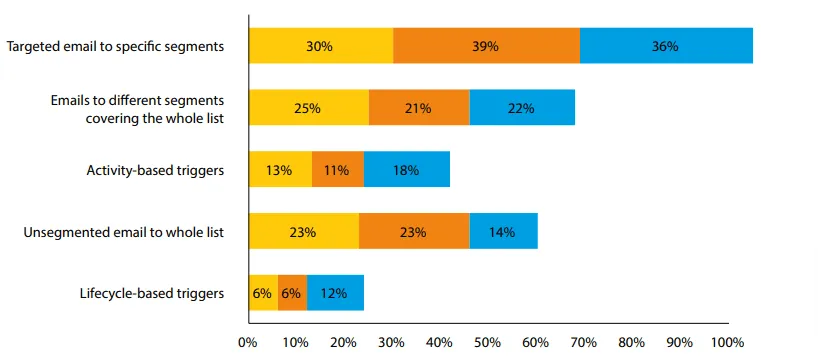 Diagram illustrating the concept of email segmentation for targeted marketing campaigns and improved revenue generation.
Diagram illustrating the concept of email segmentation for targeted marketing campaigns and improved revenue generation.
- Segmentation and Open Rates: Segmented and personalized emails achieve average open rates 46% higher than non-segmented messages (Source: Instapage).
- Personalization Boosts Transaction Rates: Personalized emails deliver transaction rates that are 6 times higher than generic emails (Instapage).
- ROI of Personalized Emails: The median ROI for personalized email marketing reaches 122%, significantly outperforming non-personalized campaigns (Instapage).
- Levels of Personalization:
- Personalized Subject Line Only: Average open rate 7.4%, click rate 0.4%.
- Personalized Message Body Only: Average open rate 18.8%, click rate 2.1%.
- Personalized Subject Line & Body: Average open rate 5.9%, click rate 0.2% (Source: Instapage). (Note: These specific Instapage stats seem counterintuitive regarding combined personalization; verify source context if possible, but reported as per original text).
- Transactional Emails: These automated emails (e.g., order confirmations, shipping notices) are highly effective. Experian reports they achieve 8x more opens and clicks than other email types and can generate 6x more revenue.
- Consumer Expectations: Personalization is increasingly expected. 80% of customers are more likely to purchase from brands offering personalized experiences, and 83% are willing to share data to enable it (Litmus).
- Lead Collection via Landing Pages: Marketers use various methods on landing pages: newsletter signup forms (45%), downloadable content like ebooks/whitepapers (37%), product launch promotions (23%), and webinar invitations (20%) (GetResponse).
- Email Signature Content: A Moosend study found 75% of email signatures include contact information. Phone numbers were present in 60%, while social media links were less common (Twitter 7%, Facebook 3%, LinkedIn 2%).
- Email Marketing Automation Usage: 64% of marketers leverage email automation for tasks like welcome sequences and customer onboarding (GetResponse).
- Common Automation Techniques: These include basic profile-based targeting (26%), personalization with dynamic content (23%), lead scoring (15%), advanced segmentation (13%), and using AI for message relevance (5%).
- Benefits of Automation: Marketers cite saving time (30%) as the top benefit, followed by lead generation (22%), increased revenue (17%), customer retention (11%), and improved campaign tracking (8%) (GetResponse).
- Data for Personalization: Most marketers (80%) use profile data for personalization, while 64% personalize based on customer segments.
The Rise of AI in Email Marketing
Artificial intelligence is increasingly influencing email marketing strategies, enabling greater sophistication and efficiency.
- AI Adoption: According to Litmus, 33% of marketers currently utilize AI in their general marketing efforts, with another 39% planning to adopt it soon.
- AI Applications in Email: AI is being applied in various ways within email marketing:
- Send Time Optimization: 70%
- Segmentation and Subscriber Targeting: 55%
- Content Suggestions & Product Recommendations: 47%
- Writing Personalized Copy: 32%
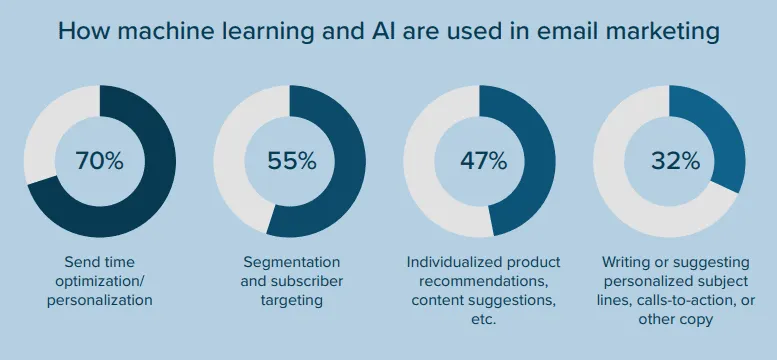 Pie chart showing the applications of AI in email marketing, including send time optimization, segmentation, and content suggestions.
Pie chart showing the applications of AI in email marketing, including send time optimization, segmentation, and content suggestions.
The integration of AI allows marketers to automate complex tasks, deliver hyper-personalized experiences at scale, and ultimately improve campaign performance and ROI. As AI tools become more accessible, their role in email marketing is expected to grow significantly.
Final Thoughts on Email Marketing Statistics
The statistics presented for 2025 unequivocally demonstrate that email marketing remains a highly effective and profitable channel. With billions of users worldwide and an average ROI of 36:1, it offers unparalleled reach and value. Key takeaways include the continued dominance of mobile email consumption, the significant revenue impact of personalization and segmentation, and the growing role of automation and AI in optimizing campaigns. While challenges like maintaining deliverability and combating inbox clutter persist, the data shows that strategic, data-driven email marketing yields substantial rewards. Success hinges on understanding your audience, leveraging personalization, optimizing for mobile, continuously testing, and adapting to evolving technologies. By focusing on delivering value and relevant content, businesses can harness the power of email to build relationships, drive engagement, and achieve significant growth.
Are you looking to enhance your email marketing efforts with cutting-edge technology? Explore the AI tools available on Sdigi AI Tools to discover solutions that can help automate, personalize, and optimize your campaigns for maximum impact.
